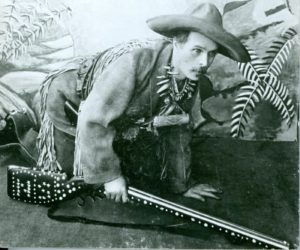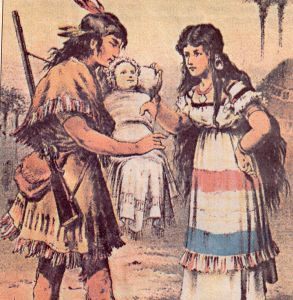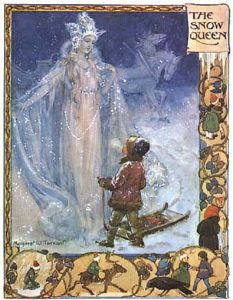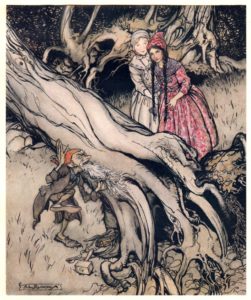The Major Influences of German Fairy Tales on My Writing
I grew up in Germany, the birthplace of the Brothers Grimm, Ludwig Bechstein, and Wilhelm Hauff. Hauff wrote some of my most favorite stories EVER, such as Zwerg Nase (Little Longnose), Kalif Storch (Caliph Stork) or Das Wirtshaus im Spessart (Spessart Inn).
Fairy Tales are everywhere in Germany. Movies, picture books–we even studied the form in school. My school leaving oral exam was on the topic of German Fairy Tales and Their Relevance to Modern Culture.
In fact, one of my earliest memories is my grandmother telling me Hans Christian Andersen stories, although she changed the endings and saved the little mermaid. Every bedtime, I dived into worlds full of fairies, witches, all kinds of creatures that abound in European mythology.
How Come Germans Are so Interested in Native American Culture?

Another huge influence in my youth was Karl May. A German writer from the nineteenth century, Karl May is still hugely popular. In fact, he’s one of the bestselling German authors ever to this day.
He was born in East Germany and spent many of his first thirty years in jail for various offences, including vagrancy and theft. Later in his life, he traveled through North America with his wife for six weeks, before proceeding to write thirty-three novels about his imaginary travels through the Americas and Arabia.

His greatest creation is the character of Old Shatterhand, a German immigrant, and his Apache blood brother Winnetou, the Chief of the Apaches. He researched his locations, aided by contemporary reports and his great imagination.
As a child, I learned expressions from the Apache and Sioux language, although I assume they were made up as well. It certainly didn’t stop me as a child. It’s not exaggerated to say that EVERYBODY in 1970s Germany was into dressing up as Native Americans, including making our own headgear from white goose feathers.
Our school library was full of instructions books on how to make your own leather outfits, bead embroidery, even how to make our own Pemmikan. Today, I would consider it cultural appropriation, but in those days, we saw absolutely nothing wrong with it.
The Spirit Walker Series: How it All Comes Together
So when I decided to write a paranormal romance novel about a young German woman who studies in the US, and a Native American guy who happens to be a spirit walker, I knew exactly where to draw my inspiration from.
The Spirit Walker series has very little to do with traditional Native American mythology. Elements, sure, but I was more interested in throwing interesting people into a situation so unusual, they are forced to rely on each other to get out the other side.
I worked hard on showing a member from the fictitious tribe of the Oklahoma Mekui’te straddling both the modern world while hanging on to his ancient heritage. Equally, the heroine grew up in Germany and doesn’t feel quite at home in the US yet.

Their devotion to each other, their sacrifice and love, is the key to their survival against the spirit world, ruled by a mythical being, strongly modeled on the German Snow Queen. Talk about a mix of cultures!
I loved every minute of writing the series, and I hope it shows in the end result.
